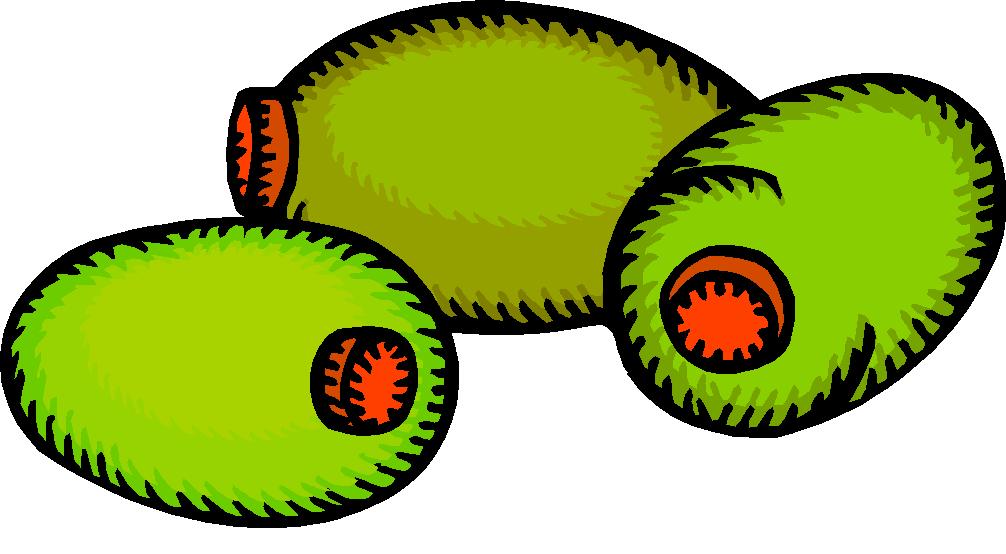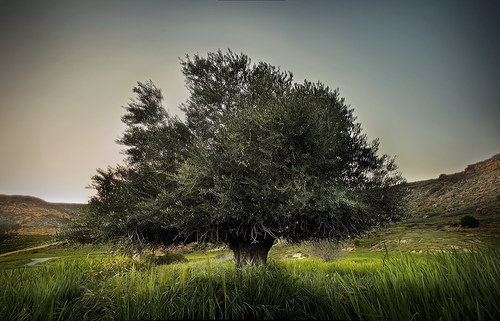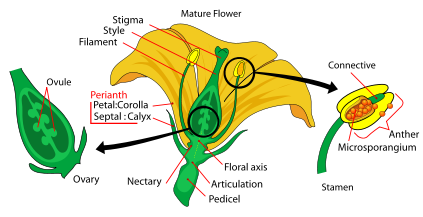Life Story
Olive trees grown for cultivation can be started with either a seed or what is called a cutting. Seeds provide for more genetic variability but cuttings survive better and grow more quickly. A cutting can be as small as shoots or be as large as a section of a branch that is about eighteen inches long and two to three inches thick. This larger cutting is called a truncheon.
A seed is an embryo and the food supply it needs to grow. All of this is surrounded by a protective outer coat. Once the seed matures it is dispersed by the wind or other means. When used for cultivation the seed is planted directly by the farmer.
In the wild, olive trees use pollination to develop seeds and reproduce. In the spring, what is known as the blossoming period begins. This is when the trees begin to produce flowers which will later develop into the fruit, the olive. This flower is specialized for sexual reproduction in the plant. Olive trees first begin flowering when they are about 5-6 years old and are said to produce the best crops when they are between 40 and 50 years old. Olive trees produce two types of flowers, one perfect with both female and male parts and the other with only the male parts called the stamen. The olive tree flower have four petals and 2 stamens.
The stamen of the plant contains what is called the anther and the filament. The filament is a stalk that holds the anther up. The anther produces the pollen. Each anther is made of microsporangium that contain diploid microsporophytes. These microsporophytes divide by meiosis and produce microspores that will then be haploid. The microspore then develops into a pollen grain made up of the male gametophyte and a surrounding pollen wall. This wall will protect the pollen grain as it is transported. The male gametophyte contains two haploid cells. One is called a generative cell. This cell will divide to form two separate sperm. The other cell is called the tube cell and it will produce a pollen tube.
Megasporangia produce megaspores which then will give rise to the female gametophyte. Protecting the megasporangium is a layer of sporophyte tissue called the integument. The megasporangium, megaspore and the integuments as a whole is called the ovule. This ovule will develop into an ovary. This ovule will then contain the female gametophyte which can also be called an embryo sac. The embryo sac will produce a small ovulum also known as the egg. If the egg is fertilized, it will develop into the seed. The carpal of the flower contains the ovary, a stigma a sticky tip which receives the pollen and the style that leads from the stigma to the ovary.
Olive tree pollen is largely wind pollinated. This means the wind carries the pollen to the embryo sac where the egg is housed. Many olive trees self-pollinate meaning the pollen of one plant will pollinate the ovule of the same tree. Although self-pollination is most common, cross-pollination is better for produce fruit.
A flower is pollinated when pollen grains adhere to the sticky stigma. After this the pollen grain will germinate, meaning the male gametophyte inside the pollen grain will extend a pollen tube down the style of the carpal. Once this tube reaches the ovary, it will penetrate the ovule and release the two sperm cells. One of the sperm will fertilize the egg forming a zygote. The other sperm fuses with two nuclei that are also found in a female gametophyte. This produces a triploid cell. The ovule will now mature into a seed. The seed will contain an embryo, developed from the zygote, a endosperm produced from the dividing of the triploid cell and finally the seed coat that forms from the integuments. The ovary will become a fruit while the ovules are turning into seeds. In other words, while the ovules are turning into seeds, an olive will form.

Once the seed is dispersed via animals, humans, falling to the ground or by other means, the coat of the seed will rupture when conditions are favorable. The embryo will then emerge as a seedling using the nutrients stored in the endosperm. This little seedling will grow into a mature tree and after it is 5-6 years old it will begin the process over. To learn more about the actual olive check out BIG-LEAGUE BY-PRODUCTS.

